-
EXECUTIVE SUMMARY
-
Market Overview
-
Key Findings
-
Market Segmentation
-
Competitive Landscape
-
Challenges and Opportunities
-
Future
-
Outlook
-
MARKET INTRODUCTION
-
Definition
-
Scope of the study
- Research Objective
- Assumption
- Limitations
-
RESEARCH METHODOLOGY
-
Overview
-
Data Mining
-
Secondary Research
-
Primary Research
- Breakdown of Primary
-
Primary Interviews and Information Gathering Process
-
Respondents
-
Forecasting Model
-
Market Size Estimation
- Top-Down Approach
-
Bottom-Up Approach
-
Data Triangulation
-
Validation
-
MARKET DYNAMICS
-
Overview
-
Drivers
-
Restraints
-
Opportunities
-
MARKET
-
FACTOR ANALYSIS
-
Value chain Analysis
-
Porter''s Five Forces
- Bargaining Power of Suppliers
- Bargaining Power
- Threat of New Entrants
- Threat of Substitutes
- Intensity of Rivalry
-
Analysis
-
of Buyers
-
COVID-19 Impact Analysis
- Regional Impact
- Opportunity and
-
Market Impact Analysis
-
Threat Analysis
-
IN-MEMORY COMPUTING MARKET, BY APPLICATION
-
(USD BILLION)
-
Data Analytics
-
Real-Time Data Processing
-
Financial Services
-
E-Commerce
-
Telecommunications
-
IN-MEMORY COMPUTING MARKET, BY DEPLOYMENT MODEL (USD BILLION)
-
On-Premises
-
Cloud-Based
-
Hybrid
-
IN-MEMORY COMPUTING MARKET, BY
-
TECHNOLOGY (USD BILLION)
-
Database Systems
-
Data Grid Systems
-
Stream Processing
-
Machine Learning
-
IN-MEMORY COMPUTING
-
MARKET, BY END USE (USD BILLION)
-
BFSI
-
Retail
-
Healthcare
-
Manufacturing
-
Telecommunications
-
IN-MEMORY COMPUTING
-
MARKET, BY REGIONAL (USD BILLION)
-
North America
- US
- Canada
-
Europe
- Germany
- UK
- Russia
- Italy
- Spain
-
France
-
Rest of Europe
-
APAC
- China
- India
- South Korea
- Malaysia
- Thailand
- Indonesia
- Rest of APAC
-
Japan
-
South America
- Mexico
- Argentina
- Rest of South
-
Brazil
-
America
-
MEA
- GCC Countries
- South Africa
- Rest of MEA
-
COMPETITIVE LANDSCAPE
-
Overview
-
Competitive Analysis
-
Market share Analysis
-
Major Growth Strategy in the In-Memory Computing Market
-
Competitive
-
Benchmarking
-
Leading Players in Terms of Number of Developments in the
-
In-Memory Computing Market
-
Key developments and growth strategies
- New Product Launch/Service Deployment
- Merger & Acquisitions
- Joint Ventures
-
Major Players Financial Matrix
- Major Players R&D Expenditure. 2023
-
Sales and Operating Income
-
COMPANY PROFILES
-
Amazon Web Services
- Financial
- Products Offered
- Key Developments
- Key Strategies
-
Overview
-
SWOT Analysis
-
Apache Ignite
- Products Offered
- Key Developments
- SWOT Analysis
- Key Strategies
-
Financial Overview
-
Altibase
- Financial Overview
- Products Offered
- Key Developments
- SWOT Analysis
- Key Strategies
-
Google
- Financial Overview
- Products Offered
- Key Developments
- SWOT Analysis
- Key Strategies
-
GridGain
- Financial Overview
- Products Offered
- Key Developments
- SWOT Analysis
- Key Strategies
-
SAP HANA
- Financial Overview
- Products Offered
- Key Developments
- SWOT Analysis
- Key Strategies
-
TIBCO Software
- Financial Overview
- Products Offered
- Key
- SWOT Analysis
- Key Strategies
- Financial Overview
- Products Offered
- SWOT Analysis
- Key Strategies
- Financial Overview
- Products Offered
- SWOT Analysis
- Key Strategies
- Financial Overview
- Products Offered
- Key Developments
- SWOT Analysis
- Key Strategies
-
Developments
-
Oracle
-
Key Developments
-
SAP
-
Key Developments
-
Hazelcast
-
MemSQL
- Financial Overview
- Products Offered
- Key Developments
- SWOT Analysis
- Key
-
Strategies
-
Microsoft
- Financial Overview
- Key Developments
- SWOT Analysis
- Key Strategies
-
Products Offered
-
IBM
- Financial Overview
- Products Offered
- Key Developments
- SWOT
- Key Strategies
-
Analysis
-
Redis Labs
- Financial
- Products Offered
- Key Developments
- Key Strategies
-
Overview
-
SWOT Analysis
-
Pivotal Software
- Products Offered
- Key Developments
- SWOT Analysis
- Key Strategies
-
Financial Overview
-
APPENDIX
-
References
-
Related Reports
-
LIST OF TABLES
-
TABLE
-
LIST OF ASSUMPTIONS
-
NORTH AMERICA IN-MEMORY COMPUTING MARKET SIZE
-
ESTIMATES & FORECAST, BY APPLICATION, 2019-2032 (USD BILLIONS)
-
TABLE 3.
-
NORTH AMERICA IN-MEMORY COMPUTING MARKET SIZE ESTIMATES & FORECAST, BY DEPLOYMENT
-
MODEL, 2019-2032 (USD BILLIONS)
-
NORTH AMERICA IN-MEMORY COMPUTING
-
MARKET SIZE ESTIMATES & FORECAST, BY TECHNOLOGY, 2019-2032 (USD BILLIONS)
-
NORTH AMERICA IN-MEMORY COMPUTING MARKET SIZE ESTIMATES & FORECAST,
-
BY END USE, 2019-2032 (USD BILLIONS)
-
NORTH AMERICA IN-MEMORY COMPUTING
-
MARKET SIZE ESTIMATES & FORECAST, BY REGIONAL, 2019-2032 (USD BILLIONS)
-
US IN-MEMORY COMPUTING MARKET SIZE ESTIMATES & FORECAST, BY APPLICATION,
-
US IN-MEMORY COMPUTING MARKET SIZE ESTIMATES
-
& FORECAST, BY DEPLOYMENT MODEL, 2019-2032 (USD BILLIONS)
-
US
-
IN-MEMORY COMPUTING MARKET SIZE ESTIMATES & FORECAST, BY TECHNOLOGY, 2019-2032
-
(USD BILLIONS)
-
US IN-MEMORY COMPUTING MARKET SIZE ESTIMATES &
-
FORECAST, BY END USE, 2019-2032 (USD BILLIONS)
-
US IN-MEMORY COMPUTING
-
MARKET SIZE ESTIMATES & FORECAST, BY REGIONAL, 2019-2032 (USD BILLIONS)
-
CANADA IN-MEMORY COMPUTING MARKET SIZE ESTIMATES & FORECAST, BY
-
APPLICATION, 2019-2032 (USD BILLIONS)
-
CANADA IN-MEMORY COMPUTING
-
MARKET SIZE ESTIMATES & FORECAST, BY DEPLOYMENT MODEL, 2019-2032 (USD BILLIONS)
-
CANADA IN-MEMORY COMPUTING MARKET SIZE ESTIMATES & FORECAST,
-
BY TECHNOLOGY, 2019-2032 (USD BILLIONS)
-
CANADA IN-MEMORY COMPUTING
-
MARKET SIZE ESTIMATES & FORECAST, BY END USE, 2019-2032 (USD BILLIONS)
-
TABLE
-
CANADA IN-MEMORY COMPUTING MARKET SIZE ESTIMATES & FORECAST, BY REGIONAL,
-
EUROPE IN-MEMORY COMPUTING MARKET SIZE
-
ESTIMATES & FORECAST, BY APPLICATION, 2019-2032 (USD BILLIONS)
-
TABLE 18.
-
EUROPE IN-MEMORY COMPUTING MARKET SIZE ESTIMATES & FORECAST, BY DEPLOYMENT MODEL,
-
EUROPE IN-MEMORY COMPUTING MARKET SIZE
-
ESTIMATES & FORECAST, BY TECHNOLOGY, 2019-2032 (USD BILLIONS)
-
TABLE 20.
-
EUROPE IN-MEMORY COMPUTING MARKET SIZE ESTIMATES & FORECAST, BY END USE, 2019-2032
-
(USD BILLIONS)
-
EUROPE IN-MEMORY COMPUTING MARKET SIZE ESTIMATES
-
& FORECAST, BY REGIONAL, 2019-2032 (USD BILLIONS)
-
GERMANY IN-MEMORY
-
COMPUTING MARKET SIZE ESTIMATES & FORECAST, BY APPLICATION, 2019-2032 (USD BILLIONS)
-
GERMANY IN-MEMORY COMPUTING MARKET SIZE ESTIMATES & FORECAST,
-
BY DEPLOYMENT MODEL, 2019-2032 (USD BILLIONS)
-
GERMANY IN-MEMORY
-
COMPUTING MARKET SIZE ESTIMATES & FORECAST, BY TECHNOLOGY, 2019-2032 (USD BILLIONS)
-
GERMANY IN-MEMORY COMPUTING MARKET SIZE ESTIMATES & FORECAST,
-
BY END USE, 2019-2032 (USD BILLIONS)
-
GERMANY IN-MEMORY COMPUTING
-
MARKET SIZE ESTIMATES & FORECAST, BY REGIONAL, 2019-2032 (USD BILLIONS)
-
UK IN-MEMORY COMPUTING MARKET SIZE ESTIMATES & FORECAST, BY APPLICATION,
-
UK IN-MEMORY COMPUTING MARKET SIZE ESTIMATES
-
& FORECAST, BY DEPLOYMENT MODEL, 2019-2032 (USD BILLIONS)
-
UK
-
IN-MEMORY COMPUTING MARKET SIZE ESTIMATES & FORECAST, BY TECHNOLOGY, 2019-2032
-
(USD BILLIONS)
-
UK IN-MEMORY COMPUTING MARKET SIZE ESTIMATES &
-
FORECAST, BY END USE, 2019-2032 (USD BILLIONS)
-
UK IN-MEMORY COMPUTING
-
MARKET SIZE ESTIMATES & FORECAST, BY REGIONAL, 2019-2032 (USD BILLIONS)
-
FRANCE IN-MEMORY COMPUTING MARKET SIZE ESTIMATES & FORECAST, BY
-
APPLICATION, 2019-2032 (USD BILLIONS)
-
FRANCE IN-MEMORY COMPUTING
-
MARKET SIZE ESTIMATES & FORECAST, BY DEPLOYMENT MODEL, 2019-2032 (USD BILLIONS)
-
FRANCE IN-MEMORY COMPUTING MARKET SIZE ESTIMATES & FORECAST,
-
BY TECHNOLOGY, 2019-2032 (USD BILLIONS)
-
FRANCE IN-MEMORY COMPUTING
-
MARKET SIZE ESTIMATES & FORECAST, BY END USE, 2019-2032 (USD BILLIONS)
-
TABLE
-
FRANCE IN-MEMORY COMPUTING MARKET SIZE ESTIMATES & FORECAST, BY REGIONAL,
-
RUSSIA IN-MEMORY COMPUTING MARKET SIZE
-
ESTIMATES & FORECAST, BY APPLICATION, 2019-2032 (USD BILLIONS)
-
TABLE 38.
-
RUSSIA IN-MEMORY COMPUTING MARKET SIZE ESTIMATES & FORECAST, BY DEPLOYMENT MODEL,
-
RUSSIA IN-MEMORY COMPUTING MARKET SIZE
-
ESTIMATES & FORECAST, BY TECHNOLOGY, 2019-2032 (USD BILLIONS)
-
TABLE 40.
-
RUSSIA IN-MEMORY COMPUTING MARKET SIZE ESTIMATES & FORECAST, BY END USE, 2019-2032
-
(USD BILLIONS)
-
RUSSIA IN-MEMORY COMPUTING MARKET SIZE ESTIMATES
-
& FORECAST, BY REGIONAL, 2019-2032 (USD BILLIONS)
-
ITALY IN-MEMORY
-
COMPUTING MARKET SIZE ESTIMATES & FORECAST, BY APPLICATION, 2019-2032 (USD BILLIONS)
-
ITALY IN-MEMORY COMPUTING MARKET SIZE ESTIMATES & FORECAST,
-
BY DEPLOYMENT MODEL, 2019-2032 (USD BILLIONS)
-
ITALY IN-MEMORY COMPUTING
-
MARKET SIZE ESTIMATES & FORECAST, BY TECHNOLOGY, 2019-2032 (USD BILLIONS)
-
ITALY IN-MEMORY COMPUTING MARKET SIZE ESTIMATES & FORECAST, BY END
-
USE, 2019-2032 (USD BILLIONS)
-
ITALY IN-MEMORY COMPUTING MARKET SIZE
-
ESTIMATES & FORECAST, BY REGIONAL, 2019-2032 (USD BILLIONS)
-
TABLE 47.
-
SPAIN IN-MEMORY COMPUTING MARKET SIZE ESTIMATES & FORECAST, BY APPLICATION,
-
SPAIN IN-MEMORY COMPUTING MARKET SIZE ESTIMATES
-
& FORECAST, BY DEPLOYMENT MODEL, 2019-2032 (USD BILLIONS)
-
SPAIN
-
IN-MEMORY COMPUTING MARKET SIZE ESTIMATES & FORECAST, BY TECHNOLOGY, 2019-2032
-
(USD BILLIONS)
-
SPAIN IN-MEMORY COMPUTING MARKET SIZE ESTIMATES &
-
FORECAST, BY END USE, 2019-2032 (USD BILLIONS)
-
SPAIN IN-MEMORY COMPUTING
-
MARKET SIZE ESTIMATES & FORECAST, BY REGIONAL, 2019-2032 (USD BILLIONS)
-
REST OF EUROPE IN-MEMORY COMPUTING MARKET SIZE ESTIMATES & FORECAST,
-
BY APPLICATION, 2019-2032 (USD BILLIONS)
-
REST OF EUROPE IN-MEMORY
-
COMPUTING MARKET SIZE ESTIMATES & FORECAST, BY DEPLOYMENT MODEL, 2019-2032 (USD
-
BILLIONS)
-
REST OF EUROPE IN-MEMORY COMPUTING MARKET SIZE ESTIMATES
-
& FORECAST, BY TECHNOLOGY, 2019-2032 (USD BILLIONS)
-
REST OF
-
EUROPE IN-MEMORY COMPUTING MARKET SIZE ESTIMATES & FORECAST, BY END USE, 2019-2032
-
(USD BILLIONS)
-
REST OF EUROPE IN-MEMORY COMPUTING MARKET SIZE ESTIMATES
-
& FORECAST, BY REGIONAL, 2019-2032 (USD BILLIONS)
-
APAC IN-MEMORY
-
COMPUTING MARKET SIZE ESTIMATES & FORECAST, BY APPLICATION, 2019-2032 (USD BILLIONS)
-
APAC IN-MEMORY COMPUTING MARKET SIZE ESTIMATES & FORECAST, BY
-
DEPLOYMENT MODEL, 2019-2032 (USD BILLIONS)
-
APAC IN-MEMORY COMPUTING
-
MARKET SIZE ESTIMATES & FORECAST, BY TECHNOLOGY, 2019-2032 (USD BILLIONS)
-
APAC IN-MEMORY COMPUTING MARKET SIZE ESTIMATES & FORECAST, BY END
-
USE, 2019-2032 (USD BILLIONS)
-
APAC IN-MEMORY COMPUTING MARKET SIZE
-
ESTIMATES & FORECAST, BY REGIONAL, 2019-2032 (USD BILLIONS)
-
TABLE 62.
-
CHINA IN-MEMORY COMPUTING MARKET SIZE ESTIMATES & FORECAST, BY APPLICATION,
-
CHINA IN-MEMORY COMPUTING MARKET SIZE ESTIMATES
-
& FORECAST, BY DEPLOYMENT MODEL, 2019-2032 (USD BILLIONS)
-
CHINA
-
IN-MEMORY COMPUTING MARKET SIZE ESTIMATES & FORECAST, BY TECHNOLOGY, 2019-2032
-
(USD BILLIONS)
-
CHINA IN-MEMORY COMPUTING MARKET SIZE ESTIMATES &
-
FORECAST, BY END USE, 2019-2032 (USD BILLIONS)
-
CHINA IN-MEMORY COMPUTING
-
MARKET SIZE ESTIMATES & FORECAST, BY REGIONAL, 2019-2032 (USD BILLIONS)
-
INDIA IN-MEMORY COMPUTING MARKET SIZE ESTIMATES & FORECAST, BY APPLICATION,
-
INDIA IN-MEMORY COMPUTING MARKET SIZE ESTIMATES
-
& FORECAST, BY DEPLOYMENT MODEL, 2019-2032 (USD BILLIONS)
-
INDIA
-
IN-MEMORY COMPUTING MARKET SIZE ESTIMATES & FORECAST, BY TECHNOLOGY, 2019-2032
-
(USD BILLIONS)
-
INDIA IN-MEMORY COMPUTING MARKET SIZE ESTIMATES &
-
FORECAST, BY END USE, 2019-2032 (USD BILLIONS)
-
INDIA IN-MEMORY COMPUTING
-
MARKET SIZE ESTIMATES & FORECAST, BY REGIONAL, 2019-2032 (USD BILLIONS)
-
JAPAN IN-MEMORY COMPUTING MARKET SIZE ESTIMATES & FORECAST, BY APPLICATION,
-
JAPAN IN-MEMORY COMPUTING MARKET SIZE ESTIMATES
-
& FORECAST, BY DEPLOYMENT MODEL, 2019-2032 (USD BILLIONS)
-
JAPAN
-
IN-MEMORY COMPUTING MARKET SIZE ESTIMATES & FORECAST, BY TECHNOLOGY, 2019-2032
-
(USD BILLIONS)
-
JAPAN IN-MEMORY COMPUTING MARKET SIZE ESTIMATES &
-
FORECAST, BY END USE, 2019-2032 (USD BILLIONS)
-
JAPAN IN-MEMORY COMPUTING
-
MARKET SIZE ESTIMATES & FORECAST, BY REGIONAL, 2019-2032 (USD BILLIONS)
-
SOUTH KOREA IN-MEMORY COMPUTING MARKET SIZE ESTIMATES & FORECAST,
-
BY APPLICATION, 2019-2032 (USD BILLIONS)
-
SOUTH KOREA IN-MEMORY COMPUTING
-
MARKET SIZE ESTIMATES & FORECAST, BY DEPLOYMENT MODEL, 2019-2032 (USD BILLIONS)
-
SOUTH KOREA IN-MEMORY COMPUTING MARKET SIZE ESTIMATES & FORECAST,
-
BY TECHNOLOGY, 2019-2032 (USD BILLIONS)
-
SOUTH KOREA IN-MEMORY COMPUTING
-
MARKET SIZE ESTIMATES & FORECAST, BY END USE, 2019-2032 (USD BILLIONS)
-
TABLE
-
SOUTH KOREA IN-MEMORY COMPUTING MARKET SIZE ESTIMATES & FORECAST, BY REGIONAL,
-
MALAYSIA IN-MEMORY COMPUTING MARKET SIZE
-
ESTIMATES & FORECAST, BY APPLICATION, 2019-2032 (USD BILLIONS)
-
TABLE 83.
-
MALAYSIA IN-MEMORY COMPUTING MARKET SIZE ESTIMATES & FORECAST, BY DEPLOYMENT
-
MODEL, 2019-2032 (USD BILLIONS)
-
MALAYSIA IN-MEMORY COMPUTING MARKET
-
SIZE ESTIMATES & FORECAST, BY TECHNOLOGY, 2019-2032 (USD BILLIONS)
-
TABLE
-
MALAYSIA IN-MEMORY COMPUTING MARKET SIZE ESTIMATES & FORECAST, BY END USE,
-
MALAYSIA IN-MEMORY COMPUTING MARKET SIZE
-
ESTIMATES & FORECAST, BY REGIONAL, 2019-2032 (USD BILLIONS)
-
TABLE 87.
-
THAILAND IN-MEMORY COMPUTING MARKET SIZE ESTIMATES & FORECAST, BY APPLICATION,
-
THAILAND IN-MEMORY COMPUTING MARKET SIZE
-
ESTIMATES & FORECAST, BY DEPLOYMENT MODEL, 2019-2032 (USD BILLIONS)
-
TABLE
-
THAILAND IN-MEMORY COMPUTING MARKET SIZE ESTIMATES & FORECAST, BY TECHNOLOGY,
-
THAILAND IN-MEMORY COMPUTING MARKET SIZE
-
ESTIMATES & FORECAST, BY END USE, 2019-2032 (USD BILLIONS)
-
THAILAND
-
IN-MEMORY COMPUTING MARKET SIZE ESTIMATES & FORECAST, BY REGIONAL, 2019-2032
-
(USD BILLIONS)
-
INDONESIA IN-MEMORY COMPUTING MARKET SIZE ESTIMATES
-
& FORECAST, BY APPLICATION, 2019-2032 (USD BILLIONS)
-
INDONESIA
-
IN-MEMORY COMPUTING MARKET SIZE ESTIMATES & FORECAST, BY DEPLOYMENT MODEL, 2019-2032
-
(USD BILLIONS)
-
INDONESIA IN-MEMORY COMPUTING MARKET SIZE ESTIMATES
-
& FORECAST, BY TECHNOLOGY, 2019-2032 (USD BILLIONS)
-
INDONESIA
-
IN-MEMORY COMPUTING MARKET SIZE ESTIMATES & FORECAST, BY END USE, 2019-2032
-
(USD BILLIONS)
-
INDONESIA IN-MEMORY COMPUTING MARKET SIZE ESTIMATES
-
& FORECAST, BY REGIONAL, 2019-2032 (USD BILLIONS)
-
REST OF APAC
-
IN-MEMORY COMPUTING MARKET SIZE ESTIMATES & FORECAST, BY APPLICATION, 2019-2032
-
(USD BILLIONS)
-
REST OF APAC IN-MEMORY COMPUTING MARKET SIZE ESTIMATES
-
& FORECAST, BY DEPLOYMENT MODEL, 2019-2032 (USD BILLIONS)
-
REST
-
OF APAC IN-MEMORY COMPUTING MARKET SIZE ESTIMATES & FORECAST, BY TECHNOLOGY,
-
REST OF APAC IN-MEMORY COMPUTING MARKET
-
SIZE ESTIMATES & FORECAST, BY END USE, 2019-2032 (USD BILLIONS)
-
TABLE
-
REST OF APAC IN-MEMORY COMPUTING MARKET SIZE ESTIMATES & FORECAST, BY REGIONAL,
-
SOUTH AMERICA IN-MEMORY COMPUTING MARKET
-
SIZE ESTIMATES & FORECAST, BY APPLICATION, 2019-2032 (USD BILLIONS)
-
TABLE
-
SOUTH AMERICA IN-MEMORY COMPUTING MARKET SIZE ESTIMATES & FORECAST, BY
-
DEPLOYMENT MODEL, 2019-2032 (USD BILLIONS)
-
SOUTH AMERICA IN-MEMORY
-
COMPUTING MARKET SIZE ESTIMATES & FORECAST, BY TECHNOLOGY, 2019-2032 (USD BILLIONS)
-
SOUTH AMERICA IN-MEMORY COMPUTING MARKET SIZE ESTIMATES & FORECAST,
-
BY END USE, 2019-2032 (USD BILLIONS)
-
SOUTH AMERICA IN-MEMORY COMPUTING
-
MARKET SIZE ESTIMATES & FORECAST, BY REGIONAL, 2019-2032 (USD BILLIONS)
-
BRAZIL IN-MEMORY COMPUTING MARKET SIZE ESTIMATES & FORECAST, BY
-
APPLICATION, 2019-2032 (USD BILLIONS)
-
BRAZIL IN-MEMORY COMPUTING
-
MARKET SIZE ESTIMATES & FORECAST, BY DEPLOYMENT MODEL, 2019-2032 (USD BILLIONS)
-
BRAZIL IN-MEMORY COMPUTING MARKET SIZE ESTIMATES & FORECAST,
-
BY TECHNOLOGY, 2019-2032 (USD BILLIONS)
-
BRAZIL IN-MEMORY COMPUTING
-
MARKET SIZE ESTIMATES & FORECAST, BY END USE, 2019-2032 (USD BILLIONS)
-
TABLE
-
BRAZIL IN-MEMORY COMPUTING MARKET SIZE ESTIMATES & FORECAST, BY REGIONAL,
-
MEXICO IN-MEMORY COMPUTING MARKET SIZE
-
ESTIMATES & FORECAST, BY APPLICATION, 2019-2032 (USD BILLIONS)
-
TABLE 113.
-
MEXICO IN-MEMORY COMPUTING MARKET SIZE ESTIMATES & FORECAST, BY DEPLOYMENT MODEL,
-
MEXICO IN-MEMORY COMPUTING MARKET SIZE
-
ESTIMATES & FORECAST, BY TECHNOLOGY, 2019-2032 (USD BILLIONS)
-
TABLE 115.
-
MEXICO IN-MEMORY COMPUTING MARKET SIZE ESTIMATES & FORECAST, BY END USE, 2019-2032
-
(USD BILLIONS)
-
MEXICO IN-MEMORY COMPUTING MARKET SIZE ESTIMATES
-
& FORECAST, BY REGIONAL, 2019-2032 (USD BILLIONS)
-
ARGENTINA
-
IN-MEMORY COMPUTING MARKET SIZE ESTIMATES & FORECAST, BY APPLICATION, 2019-2032
-
(USD BILLIONS)
-
ARGENTINA IN-MEMORY COMPUTING MARKET SIZE ESTIMATES
-
& FORECAST, BY DEPLOYMENT MODEL, 2019-2032 (USD BILLIONS)
-
ARGENTINA
-
IN-MEMORY COMPUTING MARKET SIZE ESTIMATES & FORECAST, BY TECHNOLOGY, 2019-2032
-
(USD BILLIONS)
-
ARGENTINA IN-MEMORY COMPUTING MARKET SIZE ESTIMATES
-
& FORECAST, BY END USE, 2019-2032 (USD BILLIONS)
-
ARGENTINA
-
IN-MEMORY COMPUTING MARKET SIZE ESTIMATES & FORECAST, BY REGIONAL, 2019-2032
-
(USD BILLIONS)
-
REST OF SOUTH AMERICA IN-MEMORY COMPUTING MARKET
-
SIZE ESTIMATES & FORECAST, BY APPLICATION, 2019-2032 (USD BILLIONS)
-
TABLE
-
REST OF SOUTH AMERICA IN-MEMORY COMPUTING MARKET SIZE ESTIMATES & FORECAST,
-
BY DEPLOYMENT MODEL, 2019-2032 (USD BILLIONS)
-
REST OF SOUTH AMERICA
-
IN-MEMORY COMPUTING MARKET SIZE ESTIMATES & FORECAST, BY TECHNOLOGY, 2019-2032
-
(USD BILLIONS)
-
REST OF SOUTH AMERICA IN-MEMORY COMPUTING MARKET
-
SIZE ESTIMATES & FORECAST, BY END USE, 2019-2032 (USD BILLIONS)
-
TABLE
-
REST OF SOUTH AMERICA IN-MEMORY COMPUTING MARKET SIZE ESTIMATES & FORECAST,
-
BY REGIONAL, 2019-2032 (USD BILLIONS)
-
MEA IN-MEMORY COMPUTING MARKET
-
SIZE ESTIMATES & FORECAST, BY APPLICATION, 2019-2032 (USD BILLIONS)
-
TABLE
-
MEA IN-MEMORY COMPUTING MARKET SIZE ESTIMATES & FORECAST, BY DEPLOYMENT
-
MODEL, 2019-2032 (USD BILLIONS)
-
MEA IN-MEMORY COMPUTING MARKET
-
SIZE ESTIMATES & FORECAST, BY TECHNOLOGY, 2019-2032 (USD BILLIONS)
-
TABLE
-
MEA IN-MEMORY COMPUTING MARKET SIZE ESTIMATES & FORECAST, BY END USE, 2019-2032
-
(USD BILLIONS)
-
MEA IN-MEMORY COMPUTING MARKET SIZE ESTIMATES &
-
FORECAST, BY REGIONAL, 2019-2032 (USD BILLIONS)
-
GCC COUNTRIES IN-MEMORY
-
COMPUTING MARKET SIZE ESTIMATES & FORECAST, BY APPLICATION, 2019-2032 (USD BILLIONS)
-
GCC COUNTRIES IN-MEMORY COMPUTING MARKET SIZE ESTIMATES & FORECAST,
-
BY DEPLOYMENT MODEL, 2019-2032 (USD BILLIONS)
-
GCC COUNTRIES IN-MEMORY
-
COMPUTING MARKET SIZE ESTIMATES & FORECAST, BY TECHNOLOGY, 2019-2032 (USD BILLIONS)
-
GCC COUNTRIES IN-MEMORY COMPUTING MARKET SIZE ESTIMATES & FORECAST,
-
BY END USE, 2019-2032 (USD BILLIONS)
-
GCC COUNTRIES IN-MEMORY COMPUTING
-
MARKET SIZE ESTIMATES & FORECAST, BY REGIONAL, 2019-2032 (USD BILLIONS)
-
SOUTH AFRICA IN-MEMORY COMPUTING MARKET SIZE ESTIMATES & FORECAST,
-
BY APPLICATION, 2019-2032 (USD BILLIONS)
-
SOUTH AFRICA IN-MEMORY
-
COMPUTING MARKET SIZE ESTIMATES & FORECAST, BY DEPLOYMENT MODEL, 2019-2032 (USD
-
BILLIONS)
-
SOUTH AFRICA IN-MEMORY COMPUTING MARKET SIZE ESTIMATES
-
& FORECAST, BY TECHNOLOGY, 2019-2032 (USD BILLIONS)
-
SOUTH AFRICA
-
IN-MEMORY COMPUTING MARKET SIZE ESTIMATES & FORECAST, BY END USE, 2019-2032
-
(USD BILLIONS)
-
SOUTH AFRICA IN-MEMORY COMPUTING MARKET SIZE ESTIMATES
-
& FORECAST, BY REGIONAL, 2019-2032 (USD BILLIONS)
-
REST OF MEA
-
IN-MEMORY COMPUTING MARKET SIZE ESTIMATES & FORECAST, BY APPLICATION, 2019-2032
-
(USD BILLIONS)
-
REST OF MEA IN-MEMORY COMPUTING MARKET SIZE ESTIMATES
-
& FORECAST, BY DEPLOYMENT MODEL, 2019-2032 (USD BILLIONS)
-
REST
-
OF MEA IN-MEMORY COMPUTING MARKET SIZE ESTIMATES & FORECAST, BY TECHNOLOGY,
-
REST OF MEA IN-MEMORY COMPUTING MARKET
-
SIZE ESTIMATES & FORECAST, BY END USE, 2019-2032 (USD BILLIONS)
-
TABLE
-
REST OF MEA IN-MEMORY COMPUTING MARKET SIZE ESTIMATES & FORECAST, BY REGIONAL,
-
PRODUCT LAUNCH/PRODUCT DEVELOPMENT/APPROVAL
-
ACQUISITION/PARTNERSHIP
-
LIST OF FIGURES
-
MARKET SYNOPSIS
-
NORTH AMERICA IN-MEMORY COMPUTING MARKET
-
ANALYSIS
-
US IN-MEMORY COMPUTING MARKET ANALYSIS BY APPLICATION
-
US IN-MEMORY COMPUTING MARKET ANALYSIS BY DEPLOYMENT MODEL
-
FIGURE
-
US IN-MEMORY COMPUTING MARKET ANALYSIS BY TECHNOLOGY
-
US IN-MEMORY
-
COMPUTING MARKET ANALYSIS BY END USE
-
US IN-MEMORY COMPUTING MARKET
-
ANALYSIS BY REGIONAL
-
CANADA IN-MEMORY COMPUTING MARKET ANALYSIS
-
BY APPLICATION
-
CANADA IN-MEMORY COMPUTING MARKET ANALYSIS BY DEPLOYMENT
-
MODEL
-
CANADA IN-MEMORY COMPUTING MARKET ANALYSIS BY TECHNOLOGY
-
CANADA IN-MEMORY COMPUTING MARKET ANALYSIS BY END USE
-
FIGURE
-
CANADA IN-MEMORY COMPUTING MARKET ANALYSIS BY REGIONAL
-
EUROPE
-
IN-MEMORY COMPUTING MARKET ANALYSIS
-
GERMANY IN-MEMORY COMPUTING
-
MARKET ANALYSIS BY APPLICATION
-
GERMANY IN-MEMORY COMPUTING MARKET
-
ANALYSIS BY DEPLOYMENT MODEL
-
GERMANY IN-MEMORY COMPUTING MARKET
-
ANALYSIS BY TECHNOLOGY
-
GERMANY IN-MEMORY COMPUTING MARKET ANALYSIS
-
BY END USE
-
GERMANY IN-MEMORY COMPUTING MARKET ANALYSIS BY REGIONAL
-
UK IN-MEMORY COMPUTING MARKET ANALYSIS BY APPLICATION
-
FIGURE
-
UK IN-MEMORY COMPUTING MARKET ANALYSIS BY DEPLOYMENT MODEL
-
FIGURE 21.
-
UK IN-MEMORY COMPUTING MARKET ANALYSIS BY TECHNOLOGY
-
UK IN-MEMORY
-
COMPUTING MARKET ANALYSIS BY END USE
-
UK IN-MEMORY COMPUTING MARKET
-
ANALYSIS BY REGIONAL
-
FRANCE IN-MEMORY COMPUTING MARKET ANALYSIS
-
BY APPLICATION
-
FRANCE IN-MEMORY COMPUTING MARKET ANALYSIS BY DEPLOYMENT
-
MODEL
-
FRANCE IN-MEMORY COMPUTING MARKET ANALYSIS BY TECHNOLOGY
-
FRANCE IN-MEMORY COMPUTING MARKET ANALYSIS BY END USE
-
FIGURE
-
FRANCE IN-MEMORY COMPUTING MARKET ANALYSIS BY REGIONAL
-
RUSSIA
-
IN-MEMORY COMPUTING MARKET ANALYSIS BY APPLICATION
-
RUSSIA IN-MEMORY
-
COMPUTING MARKET ANALYSIS BY DEPLOYMENT MODEL
-
RUSSIA IN-MEMORY
-
COMPUTING MARKET ANALYSIS BY TECHNOLOGY
-
RUSSIA IN-MEMORY COMPUTING
-
MARKET ANALYSIS BY END USE
-
RUSSIA IN-MEMORY COMPUTING MARKET ANALYSIS
-
BY REGIONAL
-
ITALY IN-MEMORY COMPUTING MARKET ANALYSIS BY APPLICATION
-
ITALY IN-MEMORY COMPUTING MARKET ANALYSIS BY DEPLOYMENT MODEL
-
ITALY IN-MEMORY COMPUTING MARKET ANALYSIS BY TECHNOLOGY
-
FIGURE
-
ITALY IN-MEMORY COMPUTING MARKET ANALYSIS BY END USE
-
ITALY
-
IN-MEMORY COMPUTING MARKET ANALYSIS BY REGIONAL
-
SPAIN IN-MEMORY
-
COMPUTING MARKET ANALYSIS BY APPLICATION
-
SPAIN IN-MEMORY COMPUTING
-
MARKET ANALYSIS BY DEPLOYMENT MODEL
-
SPAIN IN-MEMORY COMPUTING MARKET
-
ANALYSIS BY TECHNOLOGY
-
SPAIN IN-MEMORY COMPUTING MARKET ANALYSIS
-
BY END USE
-
SPAIN IN-MEMORY COMPUTING MARKET ANALYSIS BY REGIONAL
-
REST OF EUROPE IN-MEMORY COMPUTING MARKET ANALYSIS BY APPLICATION
-
REST OF EUROPE IN-MEMORY COMPUTING MARKET ANALYSIS BY DEPLOYMENT
-
MODEL
-
REST OF EUROPE IN-MEMORY COMPUTING MARKET ANALYSIS BY TECHNOLOGY
-
REST OF EUROPE IN-MEMORY COMPUTING MARKET ANALYSIS BY END USE
-
REST OF EUROPE IN-MEMORY COMPUTING MARKET ANALYSIS BY REGIONAL
-
APAC IN-MEMORY COMPUTING MARKET ANALYSIS
-
CHINA IN-MEMORY
-
COMPUTING MARKET ANALYSIS BY APPLICATION
-
CHINA IN-MEMORY COMPUTING
-
MARKET ANALYSIS BY DEPLOYMENT MODEL
-
CHINA IN-MEMORY COMPUTING MARKET
-
ANALYSIS BY TECHNOLOGY
-
CHINA IN-MEMORY COMPUTING MARKET ANALYSIS
-
BY END USE
-
CHINA IN-MEMORY COMPUTING MARKET ANALYSIS BY REGIONAL
-
INDIA IN-MEMORY COMPUTING MARKET ANALYSIS BY APPLICATION
-
FIGURE
-
INDIA IN-MEMORY COMPUTING MARKET ANALYSIS BY DEPLOYMENT MODEL
-
FIGURE 57.
-
INDIA IN-MEMORY COMPUTING MARKET ANALYSIS BY TECHNOLOGY
-
INDIA IN-MEMORY
-
COMPUTING MARKET ANALYSIS BY END USE
-
INDIA IN-MEMORY COMPUTING
-
MARKET ANALYSIS BY REGIONAL
-
JAPAN IN-MEMORY COMPUTING MARKET ANALYSIS
-
BY APPLICATION
-
JAPAN IN-MEMORY COMPUTING MARKET ANALYSIS BY DEPLOYMENT
-
MODEL
-
JAPAN IN-MEMORY COMPUTING MARKET ANALYSIS BY TECHNOLOGY
-
JAPAN IN-MEMORY COMPUTING MARKET ANALYSIS BY END USE
-
FIGURE 64.
-
JAPAN IN-MEMORY COMPUTING MARKET ANALYSIS BY REGIONAL
-
SOUTH KOREA
-
IN-MEMORY COMPUTING MARKET ANALYSIS BY APPLICATION
-
SOUTH KOREA
-
IN-MEMORY COMPUTING MARKET ANALYSIS BY DEPLOYMENT MODEL
-
SOUTH KOREA
-
IN-MEMORY COMPUTING MARKET ANALYSIS BY TECHNOLOGY
-
SOUTH KOREA IN-MEMORY
-
COMPUTING MARKET ANALYSIS BY END USE
-
SOUTH KOREA IN-MEMORY COMPUTING
-
MARKET ANALYSIS BY REGIONAL
-
MALAYSIA IN-MEMORY COMPUTING MARKET
-
ANALYSIS BY APPLICATION
-
MALAYSIA IN-MEMORY COMPUTING MARKET ANALYSIS
-
BY DEPLOYMENT MODEL
-
MALAYSIA IN-MEMORY COMPUTING MARKET ANALYSIS
-
BY TECHNOLOGY
-
MALAYSIA IN-MEMORY COMPUTING MARKET ANALYSIS BY END
-
USE
-
MALAYSIA IN-MEMORY COMPUTING MARKET ANALYSIS BY REGIONAL
-
THAILAND IN-MEMORY COMPUTING MARKET ANALYSIS BY APPLICATION
-
FIGURE
-
THAILAND IN-MEMORY COMPUTING MARKET ANALYSIS BY DEPLOYMENT MODEL
-
FIGURE
-
THAILAND IN-MEMORY COMPUTING MARKET ANALYSIS BY TECHNOLOGY
-
FIGURE 78.
-
THAILAND IN-MEMORY COMPUTING MARKET ANALYSIS BY END USE
-
THAILAND
-
IN-MEMORY COMPUTING MARKET ANALYSIS BY REGIONAL
-
INDONESIA IN-MEMORY
-
COMPUTING MARKET ANALYSIS BY APPLICATION
-
INDONESIA IN-MEMORY COMPUTING
-
MARKET ANALYSIS BY DEPLOYMENT MODEL
-
INDONESIA IN-MEMORY COMPUTING
-
MARKET ANALYSIS BY TECHNOLOGY
-
INDONESIA IN-MEMORY COMPUTING MARKET
-
ANALYSIS BY END USE
-
INDONESIA IN-MEMORY COMPUTING MARKET ANALYSIS
-
BY REGIONAL
-
REST OF APAC IN-MEMORY COMPUTING MARKET ANALYSIS BY
-
APPLICATION
-
REST OF APAC IN-MEMORY COMPUTING MARKET ANALYSIS BY
-
DEPLOYMENT MODEL
-
REST OF APAC IN-MEMORY COMPUTING MARKET ANALYSIS
-
BY TECHNOLOGY
-
REST OF APAC IN-MEMORY COMPUTING MARKET ANALYSIS
-
BY END USE
-
REST OF APAC IN-MEMORY COMPUTING MARKET ANALYSIS BY
-
REGIONAL
-
SOUTH AMERICA IN-MEMORY COMPUTING MARKET ANALYSIS
-
BRAZIL IN-MEMORY COMPUTING MARKET ANALYSIS BY APPLICATION
-
FIGURE
-
BRAZIL IN-MEMORY COMPUTING MARKET ANALYSIS BY DEPLOYMENT MODEL
-
FIGURE
-
BRAZIL IN-MEMORY COMPUTING MARKET ANALYSIS BY TECHNOLOGY
-
BRAZIL
-
IN-MEMORY COMPUTING MARKET ANALYSIS BY END USE
-
BRAZIL IN-MEMORY
-
COMPUTING MARKET ANALYSIS BY REGIONAL
-
MEXICO IN-MEMORY COMPUTING
-
MARKET ANALYSIS BY APPLICATION
-
MEXICO IN-MEMORY COMPUTING MARKET
-
ANALYSIS BY DEPLOYMENT MODEL
-
MEXICO IN-MEMORY COMPUTING MARKET
-
ANALYSIS BY TECHNOLOGY
-
MEXICO IN-MEMORY COMPUTING MARKET ANALYSIS
-
BY END USE
-
MEXICO IN-MEMORY COMPUTING MARKET ANALYSIS BY REGIONAL
-
ARGENTINA IN-MEMORY COMPUTING MARKET ANALYSIS BY APPLICATION
-
ARGENTINA IN-MEMORY COMPUTING MARKET ANALYSIS BY DEPLOYMENT MODEL
-
ARGENTINA IN-MEMORY COMPUTING MARKET ANALYSIS BY TECHNOLOGY
-
ARGENTINA IN-MEMORY COMPUTING MARKET ANALYSIS BY END USE
-
FIGURE
-
ARGENTINA IN-MEMORY COMPUTING MARKET ANALYSIS BY REGIONAL
-
FIGURE 106.
-
REST OF SOUTH AMERICA IN-MEMORY COMPUTING MARKET ANALYSIS BY APPLICATION
-
FIGURE
-
REST OF SOUTH AMERICA IN-MEMORY COMPUTING MARKET ANALYSIS BY DEPLOYMENT MODEL
-
REST OF SOUTH AMERICA IN-MEMORY COMPUTING MARKET ANALYSIS BY TECHNOLOGY
-
REST OF SOUTH AMERICA IN-MEMORY COMPUTING MARKET ANALYSIS BY END
-
USE
-
REST OF SOUTH AMERICA IN-MEMORY COMPUTING MARKET ANALYSIS
-
BY REGIONAL
-
MEA IN-MEMORY COMPUTING MARKET ANALYSIS
-
FIGURE
-
GCC COUNTRIES IN-MEMORY COMPUTING MARKET ANALYSIS BY APPLICATION
-
FIGURE
-
GCC COUNTRIES IN-MEMORY COMPUTING MARKET ANALYSIS BY DEPLOYMENT MODEL
-
FIGURE
-
GCC COUNTRIES IN-MEMORY COMPUTING MARKET ANALYSIS BY TECHNOLOGY
-
FIGURE
-
GCC COUNTRIES IN-MEMORY COMPUTING MARKET ANALYSIS BY END USE
-
FIGURE 116.
-
GCC COUNTRIES IN-MEMORY COMPUTING MARKET ANALYSIS BY REGIONAL
-
FIGURE 117.
-
SOUTH AFRICA IN-MEMORY COMPUTING MARKET ANALYSIS BY APPLICATION
-
FIGURE 118.
-
SOUTH AFRICA IN-MEMORY COMPUTING MARKET ANALYSIS BY DEPLOYMENT MODEL
-
FIGURE
-
SOUTH AFRICA IN-MEMORY COMPUTING MARKET ANALYSIS BY TECHNOLOGY
-
FIGURE
-
SOUTH AFRICA IN-MEMORY COMPUTING MARKET ANALYSIS BY END USE
-
FIGURE 121.
-
SOUTH AFRICA IN-MEMORY COMPUTING MARKET ANALYSIS BY REGIONAL
-
REST
-
OF MEA IN-MEMORY COMPUTING MARKET ANALYSIS BY APPLICATION
-
REST
-
OF MEA IN-MEMORY COMPUTING MARKET ANALYSIS BY DEPLOYMENT MODEL
-
FIGURE 124.
-
REST OF MEA IN-MEMORY COMPUTING MARKET ANALYSIS BY TECHNOLOGY
-
FIGURE 125.
-
REST OF MEA IN-MEMORY COMPUTING MARKET ANALYSIS BY END USE
-
REST
-
OF MEA IN-MEMORY COMPUTING MARKET ANALYSIS BY REGIONAL
-
KEY BUYING
-
CRITERIA OF IN-MEMORY COMPUTING MARKET
-
RESEARCH PROCESS OF MRFR
-
DRO ANALYSIS OF IN-MEMORY COMPUTING MARKET
-
DRIVERS
-
IMPACT ANALYSIS: IN-MEMORY COMPUTING MARKET
-
RESTRAINTS IMPACT
-
ANALYSIS: IN-MEMORY COMPUTING MARKET
-
SUPPLY / VALUE CHAIN: IN-MEMORY
-
COMPUTING MARKET
-
IN-MEMORY COMPUTING MARKET, BY APPLICATION, 2024
-
(% SHARE)
-
IN-MEMORY COMPUTING MARKET, BY APPLICATION, 2019 TO
-
IN-MEMORY COMPUTING MARKET, BY DEPLOYMENT
-
MODEL, 2024 (% SHARE)
-
IN-MEMORY COMPUTING MARKET, BY DEPLOYMENT
-
MODEL, 2019 TO 2032 (USD Billions)
-
IN-MEMORY COMPUTING MARKET,
-
BY TECHNOLOGY, 2024 (% SHARE)
-
IN-MEMORY COMPUTING MARKET, BY TECHNOLOGY,
-
IN-MEMORY COMPUTING MARKET, BY END
-
USE, 2024 (% SHARE)
-
IN-MEMORY COMPUTING MARKET, BY END USE, 2019
-
TO 2032 (USD Billions)
-
IN-MEMORY COMPUTING MARKET, BY REGIONAL,
-
IN-MEMORY COMPUTING MARKET, BY REGIONAL, 2019 TO
-
BENCHMARKING OF MAJOR COMPETITORS
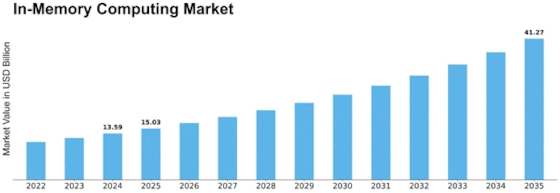

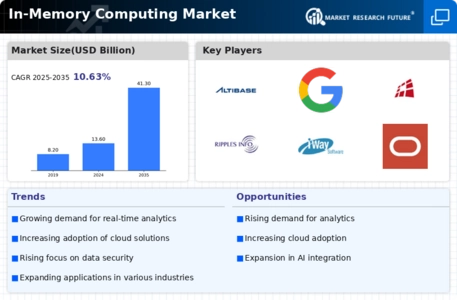
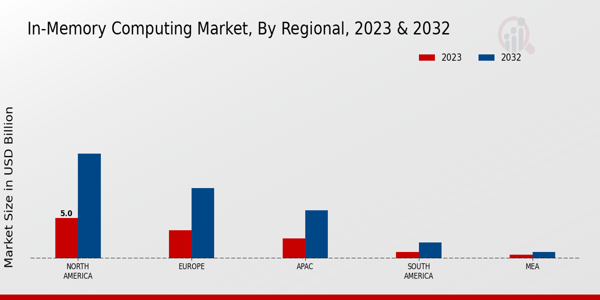



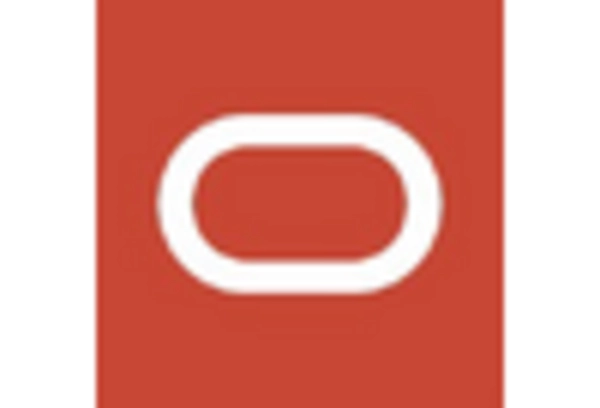
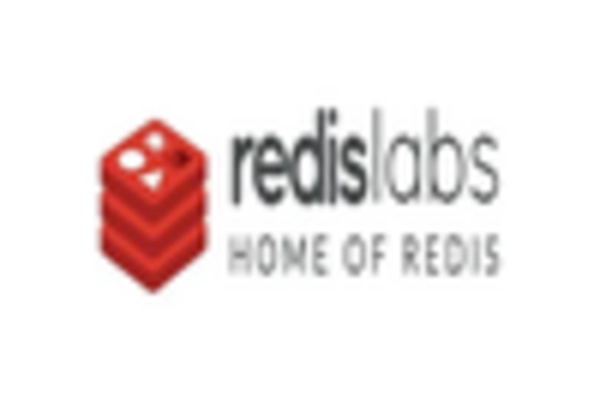
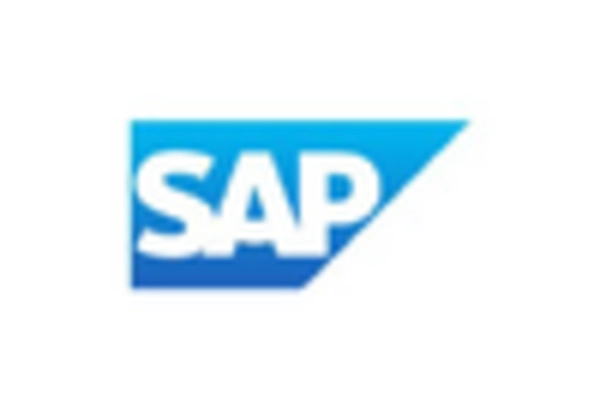









Leave a Comment